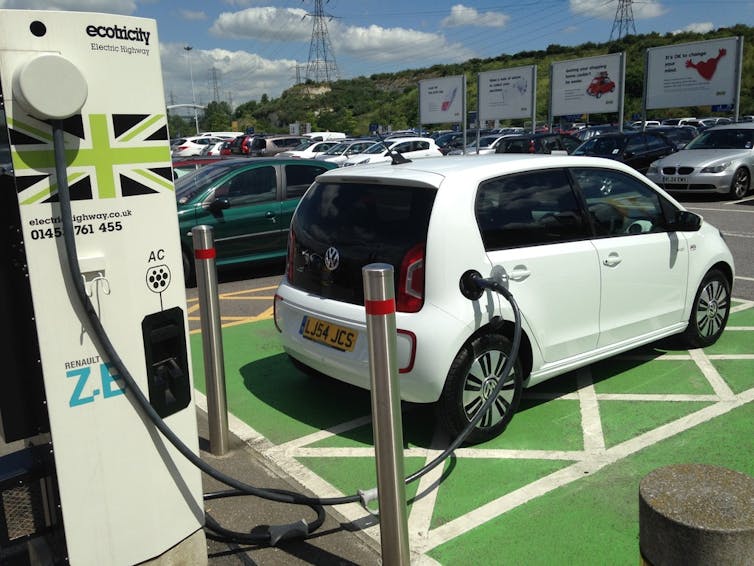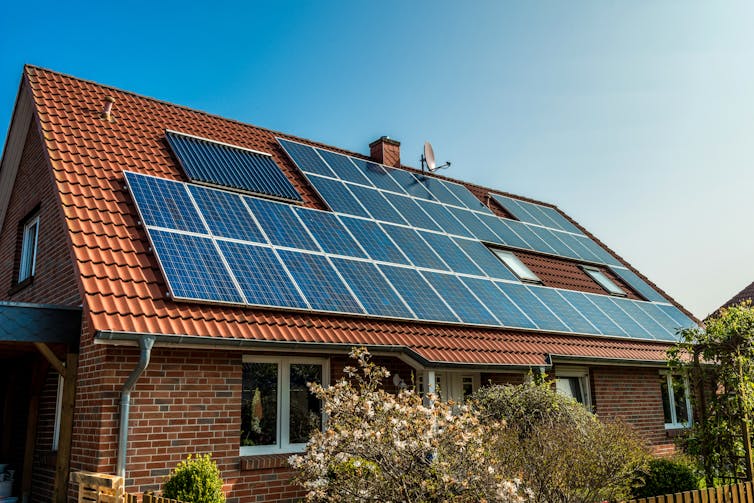
© iStock
With Sen. Joe Manchin (D-W.Va.) calling for a “pause” in negotiations on President Biden’s $3.5 trillion spending bill and the future of the package unclear, climate advocates are worried that its provisions for fighting climate change could be in trouble. Climate and clean energy groups held a virtual rally this week to demand action on the “Biden Climate Plan,” including a $150 billion "clean electricity performance program.”
That spending would be cost-effective. In 2020 the U.S. set a record for the highest number of billion-dollar weather-related disasters in a single year. There were 21 of them, costing a total of $95 billion. And that’s only the beginning — the billion-dollar disaster trend line is clearly pointing upwards.
The Intergovernmental Panel on Climate Change says that to stave off the worst effects of climate change, we must get to net-zero carbon emissions by 2050. According to International Energy Agency, this will require “total transformation” of the global energy system, including increasing use of wind and solar almost twenty-fold by 2050.
While wind and solar capacity are ramping up, we must quicken the pace. And it’s not only a matter of building renewable capacity; the electric grid must also be equipped to handle the surge in renewable generation. Currently, the U.S. electric grid is not.
Most renewable generation isn’t steady, but ebbs and flows with the wind and the cloud cover. As renewable capacity grows, the peaks and valleys of renewable output will get higher and deeper. In order for the grid to handle the extremes, we’ll need to smooth out the peaks and valleys of energy demand. That means the coming boom of solar and wind power must be paired with a boom in flexible energy use.
In simple terms, flexible energy means using more energy when it’s clean and plentiful and less when it’s dirty and scarce. For example, controllable thermostat programs let users automatically dial back their air conditioning use when outside temperatures soar and stress the grid, driving up wholesale and environmental costs. These programs are a tool for moderating peak energy demand and matching demand to supply matches when the grid is stressed. But they’re still evolving, and they have a lot more potential to benefit the grid than they currently do.
For example, energy flexibility programs could also encourage consumers to make more use of peak solar output when the midday sun is shining and reduce their energy demand later in the afternoon when less renewable energy is available. This can be done without losing convenience or comfort by pre-cooling homes, heating water in the late morning and storing it for later use, charging electric vehicles when demand is lower and renewable output is higher, and by installing solar panels with battery storage.
To realize the full potential of energy flexibility programs, we need to electrify everything. That means replacing gasoline-powered cars with EVs, replacing natural gas water heaters with heat pumps, and fueling everything else in our homes with electrons instead of fossil fuels. This not only lowers fossil fuel consumption and carbon emissions, it connects all the things we use energy for to the grid, which can be managed to match supply and demand more efficiently. That will lay the foundation for a more sustainable energy system.
It will also deliver other co-benefits to consumers. Homes with gas appliances often have higher rates of indoor air pollution than the outside air. Because of harmful emissions from burning natural gas, children living in homes with electric-powered stoves are 42 percent less likely to suffer from asthma than those with gas stoves. Electrified homes are not only healthier, they’re also cheaper to operate: It costs about $500 per year less to power a fully electrified home than a home with a mix of electricity and fossil fuels.
The upfront cost of going all-electric is still too high for most homeowners, and that remains a challenge. When a family’s hot water heater breaks, they aren’t likely to think strategically about flexible energy while standing in the middle of a Home Depot aisle. They’ll be in a rush to get their hot water back as fast and inexpensively as possible, so they’re more likely to buy the cheapest appliance than the most sustainable one. Few will see it as an opportunity to convert from gas to electric. So we need more incentive programs to encourage more homeowners to make the switch.
When more homes are all-electric and flexible energy programs are able to scale up fully, they could have a combined total of 200 gigawatts of flexible electrical load. For comparison, that’s about 30 times the capacity of the Grand Coulee Dam, or 40 percent of the combined capacity of all U.S. natural gas-fired electrical plants. The more homes are all-electric and equipped with smart devices, smart appliances, and EVs, the more the residential sector will become the functional equivalent of a fleet of clean power plants sprinkled across the U.S.
That’s an underrecognized but gigantic resource for a sustainable energy system. Quietly emerging from the tangled wires of our aging energy infrastructure is a vast, decentralized network of virtual power plants that can deliver the kind of “total transformation” of energy systems we need to fight climate change.
Curtis Tongue is Chief Strategy Officer of OhmConnect, California’s leading clean energy program, which helps California residents reduce their energy use when the electrical grid is under stress, and recently won FastCo's World Changing Ideas award."
















